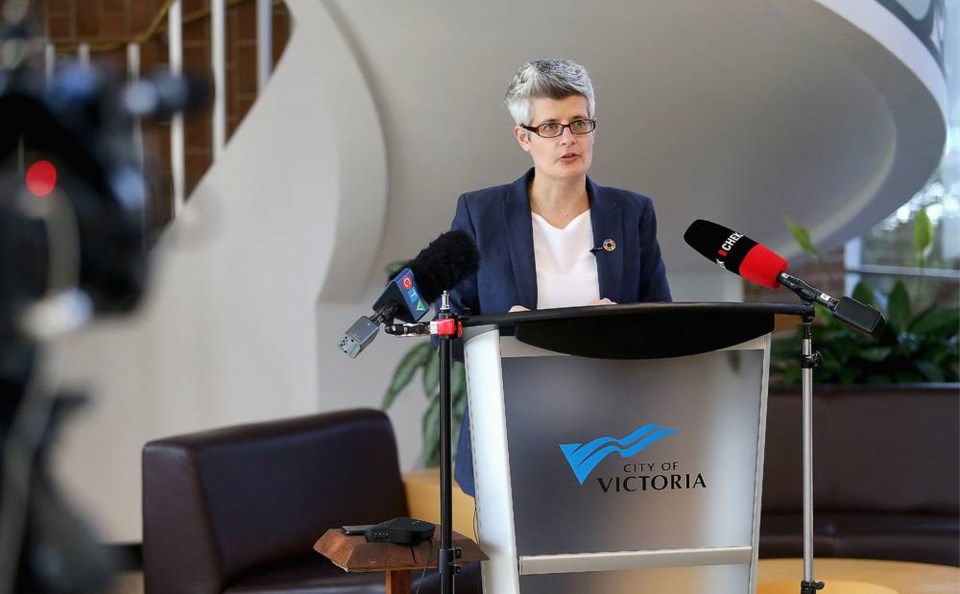A commentary by the mayor of Victoria.
Discussions about garbage have taken up a lot of space in the Comments section in the past months. Trevor Hancock and Jon O’Riordan outlined the importance of reducing consumption and taking a zero-waste approach.
Larisa Hutchinson, the Capital Regional District’s general manager of environmental services, laid out some of the very real challenges and limitations the Capital Regional District is up against in managing the region’s waste.
While we’re debating waste reduction in our daily paper, our landfill continues to fill up. Despite a 2015 regional ban on food scraps going to landfill, we’re still not adequately sorting compostable food waste from garbage. More than 25,000 tonnes of food waste from around the region still ends up there each year.
And in Victoria alone, pre-pandemic, city workers collected 25,000 single-use items like coffee cups and take out containers from public trash cans, every day. And, each year, city workers dump 5.4 million single-use items from our home garbage bins. I shudder to think about how this number has increased during COVID-19.
One of the mantras of pandemic recovery is that we have to “build back better.” This also holds true for how we manage our waste. That’s why Victoria city council recently adopted Zero Waste Victoria, a plan written by city staff in consultation with 57 industry and community organizations.
The goal of Zero Waste Victoria is to reduce the amount of waste going to the landfill by 50 per cent by 2040 and to put the city on a trajectory to achieve a fully circular economy by 2050.
And the plan sets a clear path to get us there — with 40 actions to tackle single-use materials, construction waste, food waste, and durables like our old cellphones or mattresses.
But Zero Waste Victoria — the first municipal plan of its kind in the region — is about much more than garbage. It’s an inspiring vision for a new approach to our economy, our life as a community, and our role as stewards of the products that we buy and use.
We’re all familiar with the “Reduce, Reuse, Recycle” waste reduction hierarchy. Zero Waste Victoria refines this to “Avoid, Reduce, Reuse, Repair, Refurbish, Recycle, Recover, Dispose.”
Zero Waste Victoria is a clear path to creating a city where nothing is wasted. Where reducing, reusing and repurposing materials is the norm and helps our community thrive. Where a circular economy allows innovators to succeed and businesses to flourish.
Our community’s culture of sharing and repairing helps us connect with our neighbours. Our homes and places of work are constructed using salvaged and recycled materials, putting less pressure on our valuable natural resources.
In Zero Waste Victoria, no food goes to waste and any scraps are converted into energy and nutrient-rich soil. The convenience of take-out doesn’t require disposable single-use products. And celebrations and gifts include meaningful experiences that support local businesses.
If this sounds aspirational, it’s because it is. But at the same time, it’s also possible, practical and fiscally prudent. Adam Corneil is the CEO of Unbuilders, a Vancouver-based business that deconstructs houses and resells the materials.
He says that: “There is a huge loss of invaluable old growth lumber, building materials and history when we demolish buildings and treat these materials as waste instead of resources.”
Love Food Hate Waste Canada reports that an average Canadian household throws away $1,100 of edible food each year. That adds up to almost 2.2 million tonnes of edible food wasted each year in Canada, at a cost of more than $17 billion, while also contributing to Canada’s GHG emissions. We are literally throwing money in the garbage.
Think making these changes is impossible? It’s not. We just need to bring our habits in line with the values of our community.
Until the late 1950s we put all our garbage on a barge and dumped it into the ocean. But then the garbage started to wash up on local beaches and the community noticed. So we don’t do that anymore.
Now if we all don’t change our ways, we’ll need to clear 73 more acres of forest land at Hartland to store our garbage. No one wants this, and the good news is that Zero Waste Victoria outlines a new path forward.



